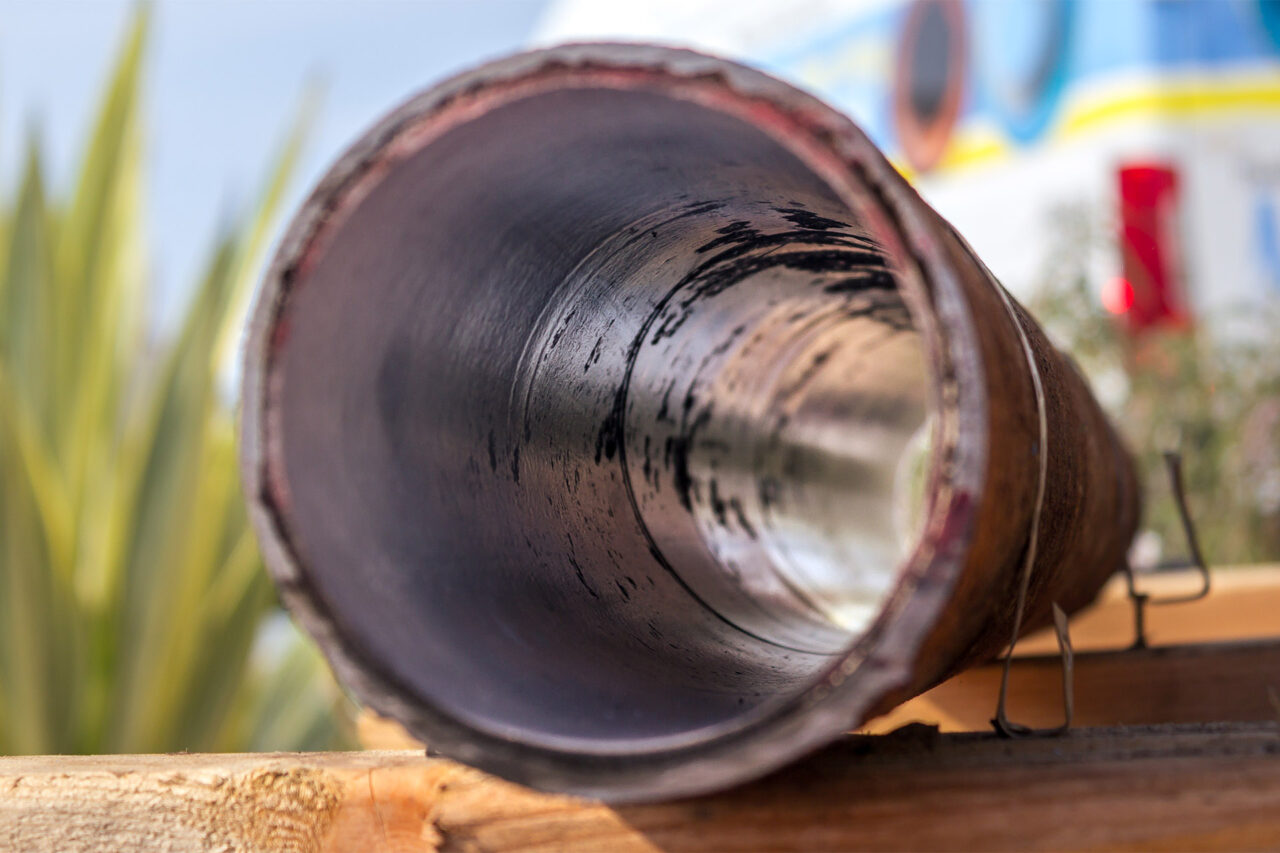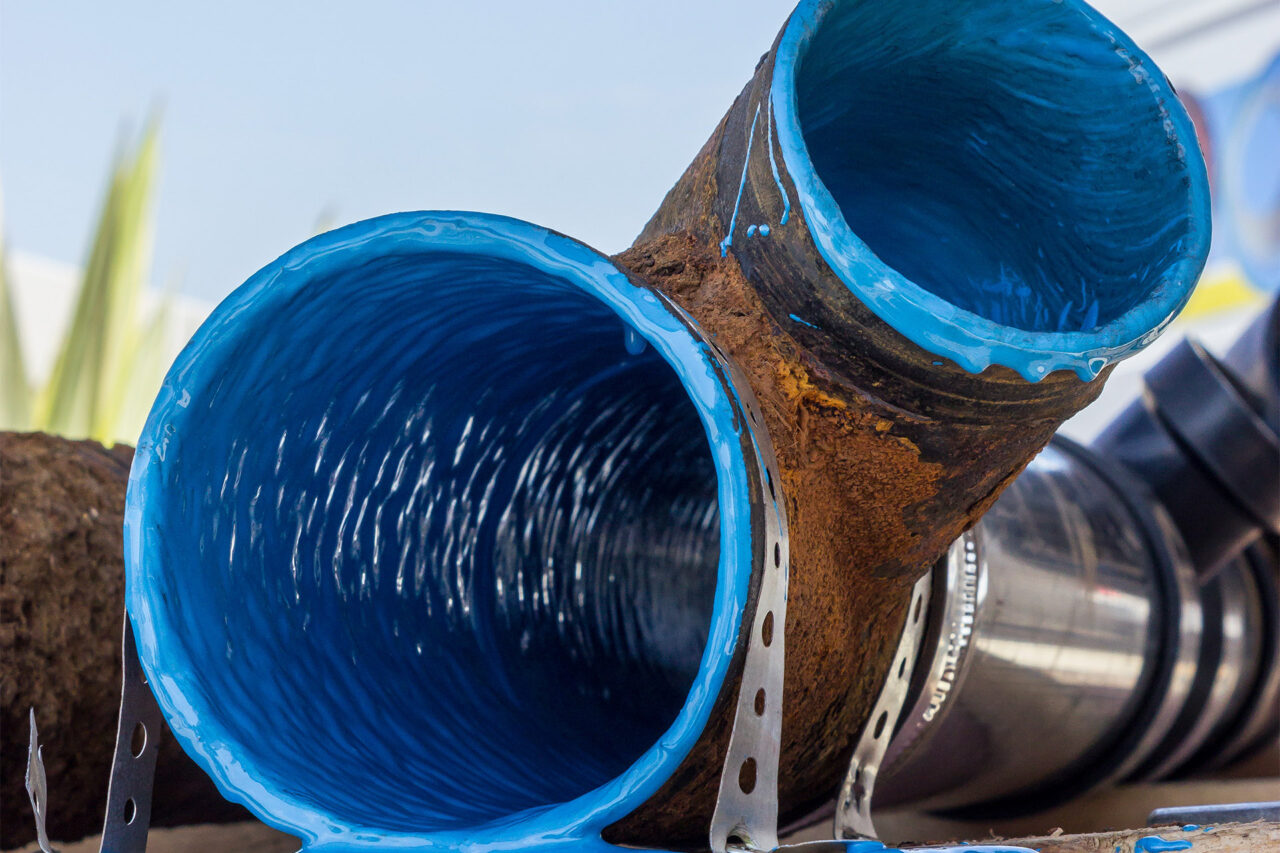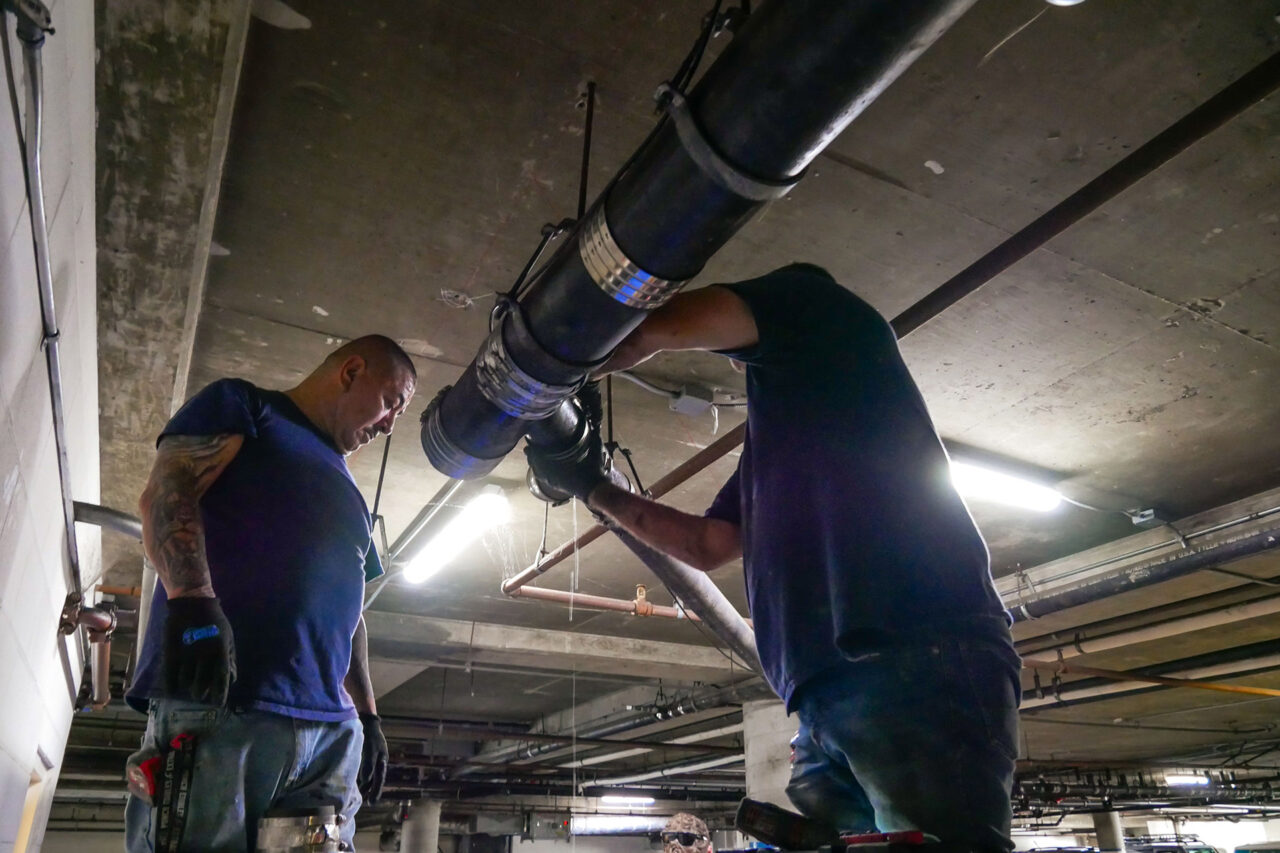How to Fix a Cracked Sewer Pipe?
A cracked sewer pipe is one of those hidden home issues that, if ignored, can quickly turn into a costly disaster. This essential line quietly carries waste away from your property underground until something goes wrong. Cracks in sewer pipes can be caused by aging materials, shifting soil, or corrosion. They can lead to slow drains, foul odors, or even sewage backups.
However, cracked pipes don’t always require major excavation and expense. In this article, we’ll explain how to diagnose the problem and your repair options, from simple DIY fixes for a cracked sewer pipe to professional solutions.
Contents
What Causes a Cracked Sewer Pipe—and Why It Matters
If you’re dealing with a cracked sewer pipe, know that you’re not alone. This common plumbing issue can lead to major problems if not addressed promptly.
Here are some of the most common reasons a sewer pipe might crack:
- Shifting Soil or Foundation Movement: Over time, the ground around your home can settle, shift, or expand. This puts pressure on underground pipes and can lead to cracks or misalignment.
- Aging or Corroded Pipes: Sewer systems made with older materials, such as clay, cast iron, or galvanized steel, are more prone to deterioration. As these materials weaken, cracks can develop more easily.
- Improper Installation: A sewer line that wasn’t installed correctly may develop issues early on. Poor sealing, misaligned joints, and low-quality piping increase the risk of a cracked sewer pipe.
- Excessive Surface Pressure: Parking heavy vehicles or building large structures on top of your sewer line can put stress on the ground underneath. Over time, this pressure can lead to a pipe cracking or collapsing.
A cracked sewer pipe can result in sewage backups, water damage, and unpleasant odors in and around your home. Read more about the most common signs of sewer damage here. The first step toward finding the right solution and preventing future damage is understanding what causes a pipe to break.
Fixing a Broken Sewer Pipe: Should You DIY or Hire a Plumber?
If you’ve discovered a cracked sewer pipe, the first question is whether you can fix it yourself or need to hire a plumber. The answer depends on the location, severity, and accessibility of the damage, as well as your comfort level with tools.
A DIY fix might work if:
- The crack is small and easy to reach (e.g., in a basement, crawl space, or exposed piping)
- You caught the problem early, before any major leaks or structural damage occurred
- You have basic plumbing experience and the right tools on hand
Common tools and materials for DIY sewer pipe repair include:
- Epoxy putty or pipe repair kits
- Pipe repair tape (silicone or fiberglass)
- Rubber couplings or flexible pipe sleeves
- An adjustable wrench and a screwdriver set
- A hacksaw or a pipe cutter (for section replacement)
- ABS glue or PVC primer and cement (for PVC pipes)
- Work gloves and safety glasses
Keep in mind that DIY solutions are usually temporary. It can stop a leak or delay damage, but it doesn’t always fix the underlying issue.
Call a plumber if:
- The pipe is underground, behind walls, or otherwise not visible
- You notice signs of serious damage, such as sewage smells, yard sinkholes, mold, or water damage inside
- The crack is more than just a surface issue, such as collapsed or corroded sections
- You want a long-lasting solution, such as trenchless pipe lining or whole-house pipe replacement
Professional plumbers, such as Almco Plumbing, have specialized tools—including sewer cameras, leak detection equipment, and trenchless technology. Most importantly, they have the expertise to ensure your cracked sewer pipe is fixed safely and permanently.
Simple DIY Fixes for a Cracked Sewer Line
As mentioned above, DIY fixes are usually short-term solutions. However, they can prevent further damage until a more permanent repair is possible. In some cases, they even serve as a lasting fix for very small cracks.
Below are some of the most common DIY methods for repairing a cracked sewer pipe.
1. Epoxy Putty or Repair Wrap
Great For: Small surface cracks in accessible sections of pipe.
How It Works: Apply the epoxy putty over the crack. It hardens quickly, creating a water-resistant seal.
Pros: Easy to apply, inexpensive, and a quick fix.
Cons: It is temporary and may not withstand long-term pressure or active leaks.
2. Pipe Repair Tape
Great For: Minor cracks or small leaks in plastic or metal pipes.
How It Works: Self-fusing silicone or fiberglass repair tape is tightly wrapped around the cracked section, sealing it as it stretches and bonds to itself.
Pros: No tools required, flexible, and fast.
Cons: Effective only on clean, dry surfaces; not suitable for major damage.
3. Rubber Couplings & Clamps
Great For: Slightly larger cracks or joining two cut sections of pipe.
How It Works: Cut out the damaged section of pipe, then connect the two ends using rubber couplings secured with metal clamps.
Pros: Durable and watertight; works for temporary or long-term use.
Cons: Requires access to the pipe and the ability to cut and align pipe sections.
4. Spot Replacement of Pipe
Great For: Larger visible cracks or heavily damaged pipe segments.
How It Works: Cut out the cracked portion of the sewer pipe and replace it with new piping using connectors or couplings.
Pros: A strong, long-lasting solution if installed correctly.
Cons: More time-consuming and requires some plumbing skill.
Caution! Always wear protective gear and turn off the water supply before starting any repair.
Keep in mind that DIY sewer pipe repairs only work if the crack is small, above ground, and easily accessible. If the pipe is underground, leaking heavily, or showing signs of collapse, call a professional.
Professional Repair Methods for a Cracked Sewer Pipe
Licensed plumbers like Almco use advanced techniques to repair cracks and restore the strength and longevity of your plumbing system. The most common and effective professional methods for repairing cracked pipes are as follows.
1. CIPP (Cured-in-Place Pipe) Lining
Best for minor to moderate cracks in sewer or drain pipes, especially underground pipes. A resin-saturated liner is inserted into the damaged pipe. Then, it is inflated and cured in place to form a strong, seamless new pipe inside the old one.
Why It’s Effective: There is no digging involved, and it provides decades of durability with minimal disruption.
2. Epoxy Pipe Lining
Best for cracks and corrosion in pipes (especially cast iron) that have not structurally collapsed. After cleaning the interior of the pipe, plumbers coat it with liquid epoxy that hardens and seals the cracks from the inside.
Why It’s Effective: It is non-invasive, corrosion-resistant, and extends the life of older pipes without excavation.
3. Sectional Pipe Replacement (Traditional Repair)
This method is best for large or isolated cracks in exposed, above-ground piping. The damaged section of the pipe is cut out and replaced with a new segment that is joined with couplings or welded, depending on the material.
Why It’s Effective: It provides a permanent, direct fix, which is ideal when the pipe is easy to access.
Professional cracked pipe repair methods are designed not only to solve the immediate problem but also to prevent future plumbing issues, saving you time, stress, and money in the long run.
DIY Repair Cost vs. Professional Methods: What to Expect
The cost difference between doing it yourself and hiring a professional is often the main factor in deciding which method to use. While DIY repairs are usually cheaper upfront, they may not always be the most cost-effective solution in the long term.
Here’s an approximate breakdown of typical costs and what each option includes.
DIY Pipe Repair: Budget-friendly, but limited.
Estimated Cost: $20–$150+ (only materials and tools if not already owned).
It’s a low-cost, quick fix for small, visible cracks. A main drawback is that it is often only a temporary fix, potentially leading to a more costly repair later.
Professional Repair: Higher cost, long-term reliability.
Estimated Cost: $300–$8,000+ (depending on the method and severity). For example:
- Video Camera Inspection (Before Repair): $150–$500
- Epoxy Pipe Lining: $1,000–$4,000+
- CIPP Lining: $2,000–$6,000
- Sectional Replacement (Minor Excavation): $500–$2,000
These are long-lasting or permanent solutions backed by warranties and professional installation that identify the full scope of the damage. They require a higher upfront investment, scheduling flexibility, and property access.
So, if the cracked pipe is small, visible, and not leaking heavily, a DIY fix can buy you time, especially if you’re confident using basic tools. However, for anything more serious or hidden, professional repair ensures that your plumbing system will stay safe, compliant, and worry-free for years to come.
Ultimately, the best approach depends on the severity and location of the crack, your skill level, and your budget. Don’t wait for a minor problem to turn into a major headache—assess the situation carefully and act quickly. When in doubt, always consult with a trusted professional, like Almco Plumbing, to ensure the job gets done right.
Your home’s plumbing system is one of its most critical components—give it the attention it deserves.


